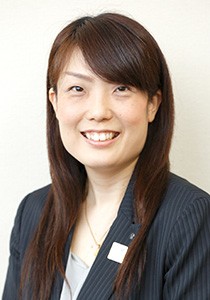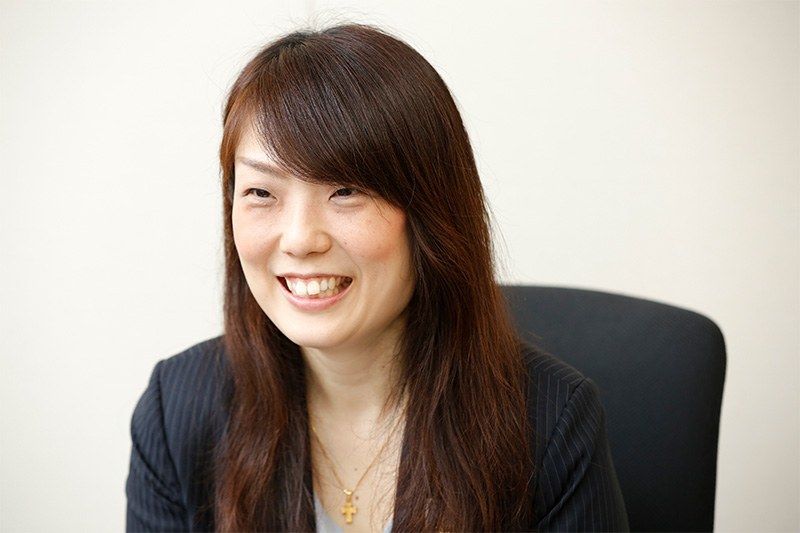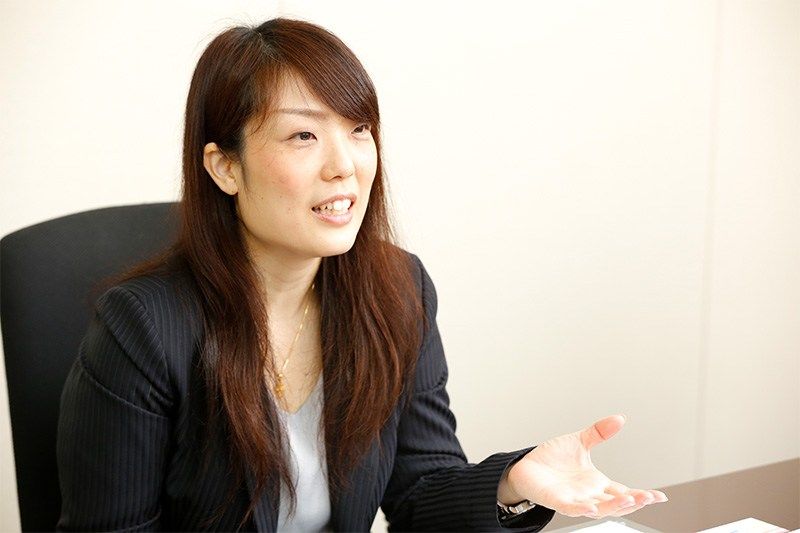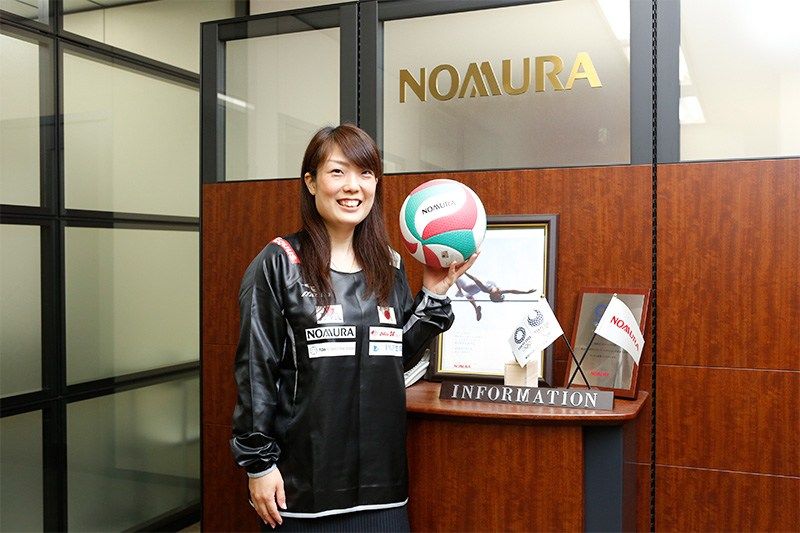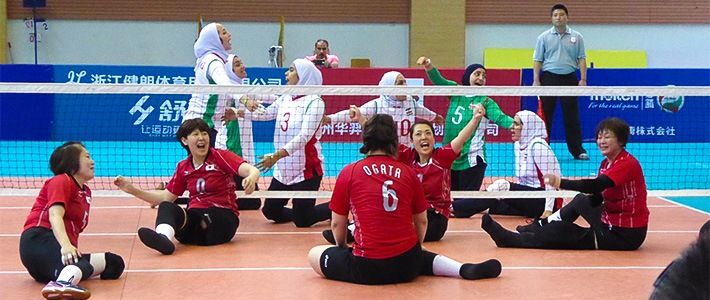
Paralympic Athletes, Up Close and Personal
Kaneki Emi: Sitting Volleyball Playmaker Is Ambassador for the Sport
Sports Tokyo 2020 Society- English
- 日本語
- 简体字
- 繁體字
- Français
- Español
- العربية
- Русский
Tough Going Even for Pro Baseball Players
It was March 3, just a few days before the opening of Japan’s professional baseball league season. After an exhibition game at the Tokyo Dome stadium, Yomiuri Giants players hurried to a makeshift court.
“Receive over there!”
“Hit it!”
At “G Hands Day,” an event sponsored by the Yomiuri Giants to raise the profile of parasports, players and members of public joined together to try sitting volleyball.
In this sport, only the upper body is used, and players’ rears must remain in contact with the court. Even professional athletes like the baseball players were having a hard time controlling the ball. On the sidelines, Kaneki Emi and other sitting volleyball national team members offered playing tips.
Kaneki laughed as she said, “I never thought the day would come when I would be teaching star athletes like the Yomiuri Giants how to play, but I’m really happy to know that exposure of this kind will make my sport more popular.”
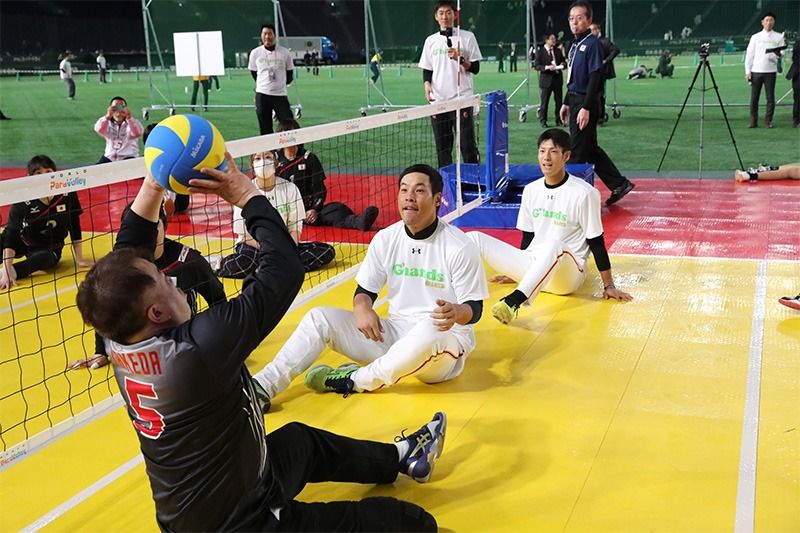 Yomiuri Giants players Takagi Kyōsuke (center) and Wakabayashi Akihiro (right) try sitting volleyball on March 4 at the G Hands Day event at Tokyo Dome. © Yomiuri Giants.
Yomiuri Giants players Takagi Kyōsuke (center) and Wakabayashi Akihiro (right) try sitting volleyball on March 4 at the G Hands Day event at Tokyo Dome. © Yomiuri Giants.
The Beijing Games: A Memorable Experience
Kaneki, a core member of Japan’s sitting volleyball national team, participated in the 2008 Beijing and 2012 London Games. At work, she’s in charge of marketing at her Nomura Securities branch office, and she’s also the mother of a nine-year old son, so every day is a whirlwind of activity.
Her first encounter with sitting volleyball came at the age of 19, when she went to her local sports center for persons with disabilities and the coach there suggested she try volleyball. Already familiar with the common form of the sport since her days as a player in middle school, she soon advanced to become a member of the national team. Disappointingly, the team did not qualify to participate at the 2004 Athens Games.
“I was playing sitting volleyball for rehabilitation and had never really given the Paralympics a thought. But when we lost out after advancing to the finals for Athens, my competitive spirit started burning bright, and I was determined to work hard to make it to the next Games in Beijing.”
The team did compete at the Beijing Games, with Kaneki as its captain, but they failed to win even one game.
“Looking back, that kind of result was only to be expected, since we had held few training camps and the team had just been thrown together. I was also too inexperienced to be an effective captain.”
Kaneki underwent a profound change as a result of her Beijing experience. The Paralympics atmosphere—at a glittering stadium full of spectators, all rooting for their countries’ teams—was completely different than the world competitions or Asian championships she had experienced until then. She was almost overwhelmed by the prodigious energy generated, but she went into fighting mode, stimulated by a sense of responsibility and pride at being on the national team.
“I’ll never know what would have been best for my life, but one thing for certain is that I wouldn’t have been able to experience the Paralympics if I hadn’t had a disability.”
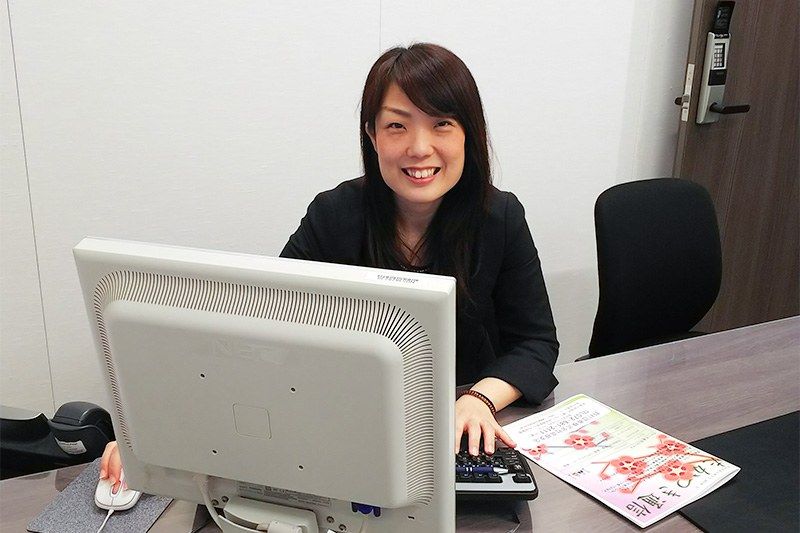 Kaneki spends much of her working day in front of a computer. (Photo courtesy of Nomura Securities)
Kaneki spends much of her working day in front of a computer. (Photo courtesy of Nomura Securities)
“No Use Crying”
Kaneki had been good at math since childhood and dreamed of working at a bank. She attended a commercial high school and found a job at a local bank after graduation. Thrilled at her good fortune, she was eager to work. But just a week after starting her new job, she felt a sharp pain in her left thigh. She went to a doctor, who diagnosed an osteosarcoma, and she was immediately hospitalized. She was just 18 at the time.
“When I heard the diagnosis, the first thing that popped into my mind wasn’t the seriousness of my condition but the thought that I wouldn’t be able to work at the bank any more. I immediately asked the doctor, ‘Does this mean I won’t be able to go to work?’”
But the gravity of the situation gradually sank in. Osteosarcoma is a type of cancer, and Kaneki couldn’t help thinking that cancer equaled a death sentence. But thanks to her family’s devoted care, Kaneki gradually stopped having such dark thoughts.
“Experiencing my family’s deep love and concern, I resolved not to cry, no matter what. My hair fell out, I was sometimes so weak that I fell on my way to the bathroom, and the overwhelming nausea that I experienced sometimes made my eyes water. But crying wasn’t going to do any good for my physical condition, and I thought it would just make things more painful for my family, so I decided I wasn’t going to shed a tear.”
Finally discharged from hospital after a year of treatment, Kaneki said the notion that she had a disability struck home when she was issued a disability certificate, entitling her to special services, by the local authorities. Although her leg was saved from amputation, a metal plate had been inserted into the bone and she could no longer bend her knee.
Discovering Sitting Volleyball
Kaneki found sitting volleyball, which she started after leaving hospital, harder than she had expected. The sport is played on a smaller court and with a lower net than regular volleyball, and players must keep their rears in contact with the court except for briefly when receiving. Because Kaneki had played volleyball in middle school, she had to restrain her urge to jump and was often penalized for disallowed moves before she became used to the new mode of play. But when her mother, who accompanied her to her games, remarked that she had never seen her daughter look so happy, Kaneki spent every weekend after that practicing on the volleyball court.
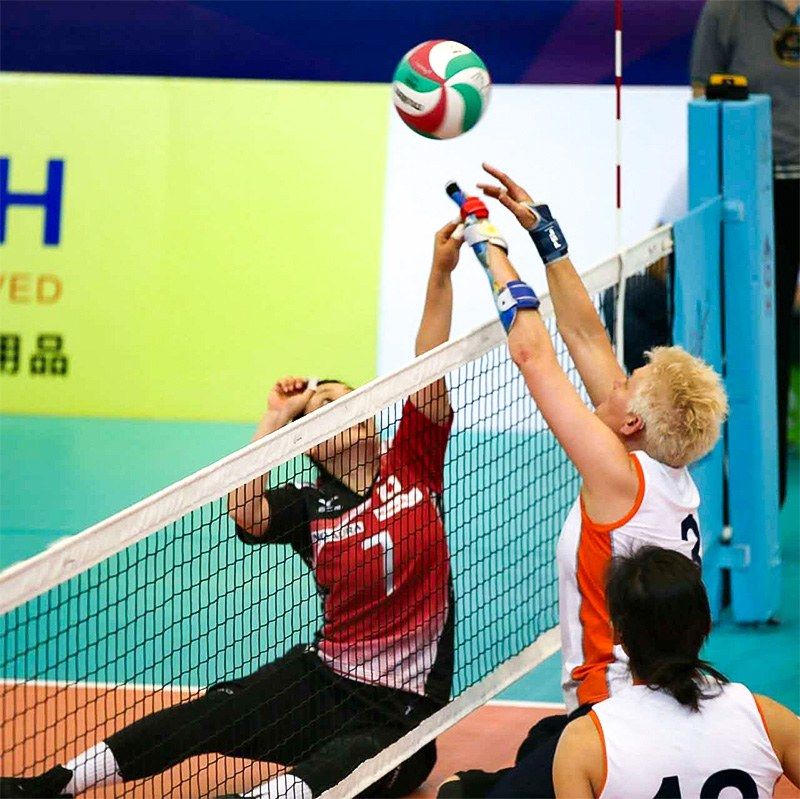 Sitting volleyball is played always keeping some part of the buttocks in contact with the court. Standing to serve, block, attack, or jump is penalized. Kaneki (left) is shown here setting up to attack at the 2017 World Super 6 Competition in Hangzhou, China. (Photo courtesy of Nomura Securities).
Sitting volleyball is played always keeping some part of the buttocks in contact with the court. Standing to serve, block, attack, or jump is penalized. Kaneki (left) is shown here setting up to attack at the 2017 World Super 6 Competition in Hangzhou, China. (Photo courtesy of Nomura Securities).
Always dogged by the worry that her cancer might recur, Kaneki passed the five-year cancer-free mark and married at the age of 23. She moved to Takatsuki in Osaka Prefecture, where her husband worked, and started working herself at the local branch of Nomura Securities.
Ever since then, she has kept busy with her job, running a household, raising a child, and finding time out from sitting volleyball practice to acquaint the general public with her sport.
Getting the Team Together to Practice Is An Ongoing Challenge
The 2020 Tokyo Games are just two years away. Sitting volleyball is played with a six-member team, and teams secure victory by winning three sets. Except for the size of the court, the height of the net, and the fact that the players are sitting, the rules are mostly the same as for regular volleyball. Kaneki is eager to do well in tournaments and show what a great game sitting volleyball can be, but she faces an uphill battle. Unlike sports practiced by individual athletes, effective team practice can’t take place unless all the players assemble. There are nearly 15 women on the national team now, but they all live in different parts of Japan. Currently, the only court with a playing surface meeting international standards—a court mat called Taraflex —is located in Himeji, west of Osaka. Team practice takes place on weekends, but not all team members are available for every practice, so it is hard for them to establish good communication.
According to Kaneki, “Team members are not always free, due to work or family commitments, and it’s quite difficult for everyone to travel from where they live to practice in Himeji.”
In addition, some players need to use their vacation allowance to compete abroad. Things have improved, though, since they now have support for their travel expenses.
“Until recently, players had to pay their own way to overseas competitions, so everyone had to work in order to earn money for that. But we were all happy, because we loved what we were doing.”
As Nomura Holdings now sponsors the national sitting volleyball team, Japan’s practice environment is gradually improving. Even so, strong teams from countries like China receive generous government support and prepare for Paralympic competition with weeks-long training camp sessions. Due to lack of practice, Japan’s national team wasn’t able to take part in the 2016 Rio Games. Physical differences in size can also give foreign players an advantage. The hurdles to a medal in Tokyo seem high, but Kaneki is confident that the Japanese players will show their mettle and go for a win.
“Everyone hopes to be able to compete in the Paralympics held in their home country. Our determination may summon forth great teamwork and fuel strengths we didn’t know we had.”
Kaneki is a setter and playmaker for the team. Kaneki’s masterly tosses on the court will undoubtedly help draw forth her teammates’ talents and bring a medal that much closer to their grasp.
(Originally published in Japanese on April 12, 2018. Interview photos by Ōkubo Keizō. Banner photo: Japan playing against Iran at the 2017 ParaVolley Asia Oceania Sitting Volleyball Championships.)
